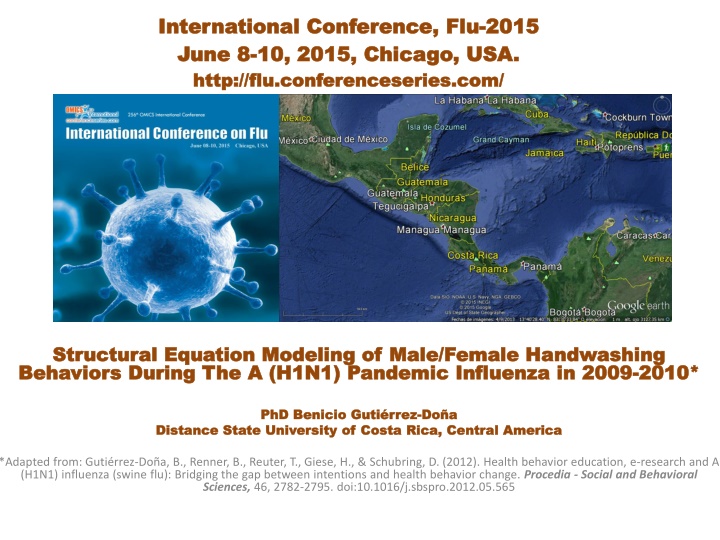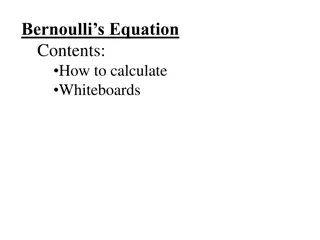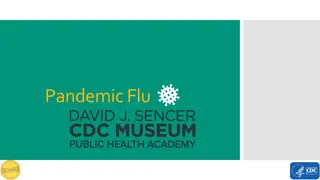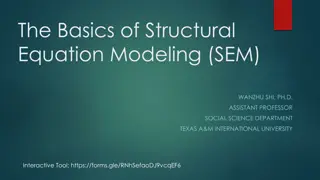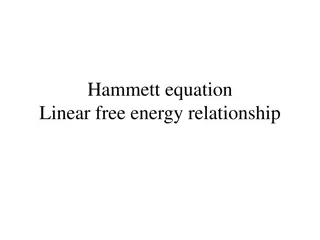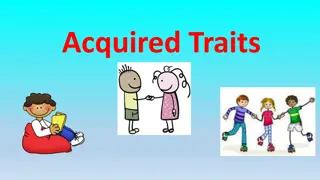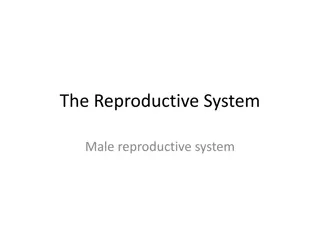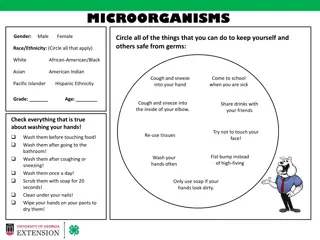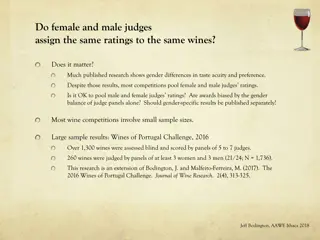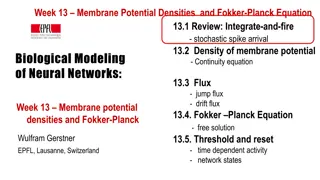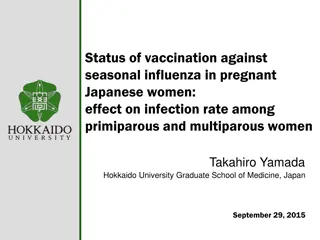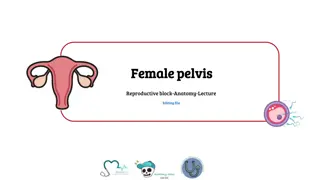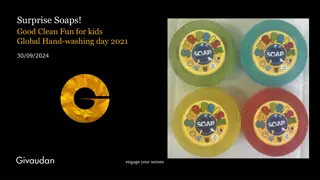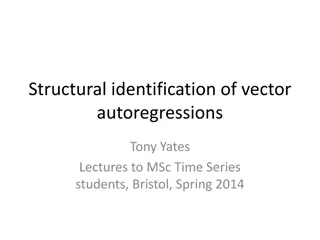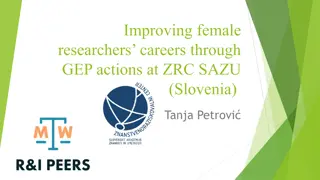Male/Female Handwashing Behaviors During A(H1N1) Pandemic: A Structural Equation Modeling Study
This study by PhD Benicio Gutiérrez explores male and female handwashing behaviors during the A(H1N1) pandemic of 2009-2010 using Structural Equation Modeling. The research focuses on understanding the motivations behind handwashing practices during the pandemic, emphasizing the importance of proper hygiene measures to prevent the spread of infectious diseases. Key aspects investigated include handwashing after contact with others, after using the bathroom, before eating, and after touching contaminated objects. The study underscores the significance of health behavior education and awareness in promoting effective hand hygiene practices.
Uploaded on Oct 10, 2024 | 0 Views
Download Presentation

Please find below an Image/Link to download the presentation.
The content on the website is provided AS IS for your information and personal use only. It may not be sold, licensed, or shared on other websites without obtaining consent from the author.If you encounter any issues during the download, it is possible that the publisher has removed the file from their server.
You are allowed to download the files provided on this website for personal or commercial use, subject to the condition that they are used lawfully. All files are the property of their respective owners.
The content on the website is provided AS IS for your information and personal use only. It may not be sold, licensed, or shared on other websites without obtaining consent from the author.
E N D
Presentation Transcript
International International Conference, Flu Conference, Flu- -2015 June 8 June 8- -10, 2015, Chicago, USA 10, 2015, Chicago, USA. . http://flu.conferenceseries.com/ http://flu.conferenceseries.com/ 2015 Structural Equation Modeling of Male/Female Handwashing Structural Equation Modeling of Male/Female Handwashing Behaviors Behaviors During During The A (H1N1) The A (H1N1) Pandemic Pandemic Influenza in Influenza in 2009 2009- -2010* 2010* PhD Benicio Guti rrez PhD Benicio Guti rrez- -Do a Do a Distance State University of Costa Rica, Central America Distance State University of Costa Rica, Central America *Adapted from: Guti rrez-Do a, B., Renner, B., Reuter, T., Giese, H., & Schubring, D. (2012). Health behavior education, e-research and A (H1N1) influenza (swine flu): Bridging the gap between intentions and health behavior change. Procedia - Social and Behavioral Sciences, 46, 2782-2795. doi:10.1016/j.sbspro.2012.05.565
Content A (H1N1) Pandemic Influenza (Swine Flu) A (H1N1) Pandemic Influenza (Swine Flu) 2009/2010 and Disease 2009/2010 and Disease Control Theoretical Model: Health Theoretical Model: Health Action Process Approach (HAPA Approach (HAPA- -model) model) Study Hypotheses Study Hypotheses Method Method Procedure and Procedure and Participants Participants Analyses Analyses Measures Measures Results Results Structural Equation Modeling Structural Equation Modeling Discussion Discussion Control Action Process Guti rrez-Do a (2015), International Conference, Flu-2015, 8-10 June, Chicago, USA
A (H1N1) Pandemic Influenza A (H1N1) Pandemic Influenza (Swine Flu) 2009/2010 and Disease Control 2009/2010 and Disease Control (Swine Flu) Boyce and Pittet (2002) assure that good hand- hygiene practices and adherence to handwashing recommendations at home, at work and in health care settings are secure practices to prevent acquisition of multiple forms of bacteria and viruses. The 11thof June 2009 the WHO declared the swine flu pandemic in phase six. In July 2009, more than 160 countries confirmed more than 170,000 cases of A(H1N1). Education on hand hygiene (health behavior), the use of protective masks, and the recognition of risk factors (risk perception) and symptoms identification (knowledge) were, among others, fundamental measures in coping with the threats of swine flu and seasonal influenza. Guti rrez-Do a (2015), International Conference, Flu-2015, 8-10 June, Chicago, USA
Socialcognitive Socialcognitive Research Questions Questions Research What Ricans maintain handwashing during the pandemic? motivated to Costa and WHO protocol adopt the Specifically, what motivated people for: handwashing after having contact with others? handwashing after having used the bathroom? handwashing before eating? handwashing after touching objects contaminated by sick persons? Guti rrez-Do a (2015), International Conference, Flu-2015, 8-10 June, Chicago, USA
Socialcognitive Socialcognitive predictors of Handwashing predictors of Handwashing (HAPA (HAPA- -model, Ralf model, Ralf Schwarzer Schwarzer) ) Handwashing Self-efficacy Handwashing Intention Perceived Risks of getting A(H1N1) influenza /seasonal influenza Guti rrez-Do a (2015), International Conference, Flu-2015, 8-10 June, Chicago, USA
Study Hypotheses for Handwashing Behaviors Study Hypotheses for Handwashing Behaviors during AH1N1 Wave1/2 (2009 during AH1N1 Wave1/2 (2009- -2010) 2010) General Hypothesis: General Hypothesis: It was expected that perceived risk of getting swine flu/common influenza and handwashing self- efficacy would predict an increase in handwashing intentions, and consequently the adoption/maintenance of handwashing behaviors during the pandemic. Gender/cultural Gender/cultural- -related hypothesis: related hypothesis: It was expected that males and females would show a different pattern of causal males and females would show a different pattern of causal relations in the relations in the adoption/maintenance of handwashing behaviors. This hypothesis was based on cultural and gender differences assumptions for Costa Ricans. Long Long- -term effect hypothesis term effect hypothesis: It was expected that perceived risk of getting swine flu/common influenza, handwashing self efficacy, and handwashing intentions during the first wave of the pandemic (2009) would account for variance in handwashing behaviors during the second wave of the pandemic swine flu (2010). Guti rrez-Do a (2015), International Conference, Flu-2015, 8-10 June, Chicago, USA It was expected that
Method Method Measures Measures & & Analyses Analyses Participants Participants & Data & Data Collection Collection Preintentional Preintentional motivation process motivation process Risk Perception (6 items, 1-7, = .80) - How likely is it that an average person of your sex and age will get A (H1N1) influenza virus this year? Handwashing self-efficacy beliefs (4 items, 1-6, = .85) I am sure I can always wash my hands before eating. Mediator Mediator Handwashing Intentions (4 items, 1 to 7, = .73) I intend to wash my hands before eating Postintentional Postintentional volition volition process Handwashing behavior (4 items, 1-7, = .71) I wash my hands before eating Analyses STRUCTURAL EQUATION MODELING (LISREL) MULTIGROUP APPROACH LONGITUDINAL APPROACH Costa Rican random sample Time 1, n = 428 (65% females, 35% males; Mage= 33 years); Time 2, n = 97 (random subsample) Data Data Collection Collection process E-Research tool: UNIPARK T1: November 2009; T2: June 2010. Guti rrez-Do a (2015), International Conference, Flu-2015, 8-10 June, Chicago, USA
Figure 2. LISREL path diagram of female between predictors and criterion at T1 (n = 196). female s s relationships 26% 38% X2(114, n = 196) = 257.29, p = .00; X2/df = 2.26; NFI = 1.00; GFI = 0.95; CFI = 1.00; RMSEA = 0.080, 90% CI for RMSEA (0.067; 0.093) Guti rrez-Do a (2015), International Conference, Flu-2015, 8-10 June, Chicago, USA
Figure 3. LISREL path diagram of male predictors and criterion at T1 (n = 85). male s s relationships between 37% 61% X2(121, n = 85) = 150.41, p = .04; X2/df = 1.24; NFI = 1.00; GFI = 0.93; CFI = 1.00; RMSEA = 0.054, 90% CI for RMSEA (0.015; 0.080). Guti rrez-Do a (2015), International Conference, Flu-2015, 8-10 June, Chicago, USA
Comprehensive Model of Handwashing Behaviors for the Prevention of Influenza in Costa Rica Self- Efficacy .45 .63 Hand- Washing Intention Risk Perception .24 .66 .60 Self- Efficacy Hand- Washing Intention .19 Guti rrez-Do a (2015), International Conference, Flu-2015, 8-10 June, Chicago, USA
Figure 4. LISREL path diagram for T1-T2 (7 months time lag; n = 71). X2(95, n = 71) = 336, p = .00; X2/df = 3.54; NFI = GFI = 0.91; CFI = 1.00; RMSEA = 0.10, 90% CI for RMSEA (0.083; 0.12). Guti rrez-Do a (2015), International Conference, Flu-2015, 8-10 June, Chicago, USA
It seems that Costa Rican females did not adopt the handwashing behavior without previously having developed an intention to wash their hands. Costa Rican males ignored their own risks of getting A (H1N1)/seasonal influenza. It appears that they basically trusted their own capabilities to protect themselves against the virus by handwashing, irrespective of the level of risk. How do gender differences help us in educating people to adopt/maintain good handwashing habits? It is still unclear whether male participants did not trust risk information or whether they just simply perceived themselves as invulnerable. Guti rrez-Do a (2015), International Conference, Flu-2015, 8-10 June, Chicago, USA
Acknowledgements Psychological Assessment and Health Psychology Department of Psychology, University of Konstanz Guti rrez-Do a (2015), International Conference, Flu-2015, 8-10 June, Chicago, USA
CONTACT ME: Dr. Benicio Guti rrez-Do a, PhD Universidad Estatal a Distancia, Costa Rica beniciogd@uned.ac.cr Guti rrez-Do a (2015), International Conference, Flu-2015, 8-10 June, Chicago, USA
